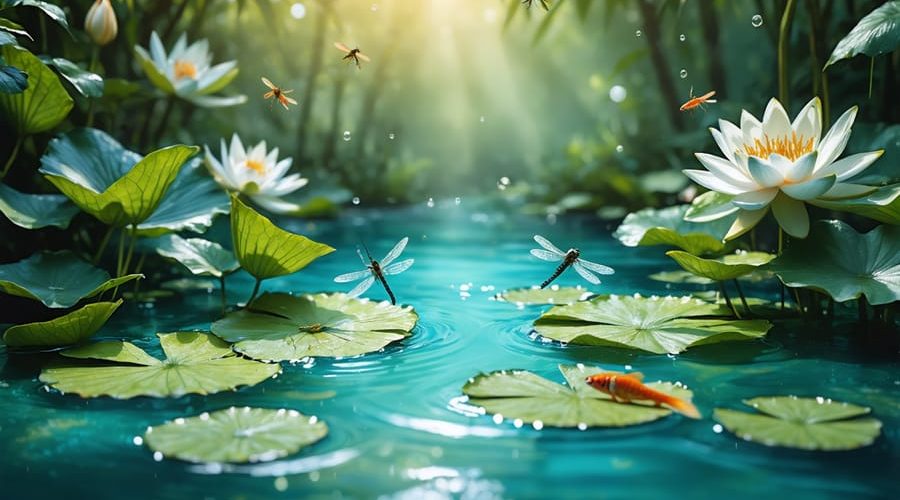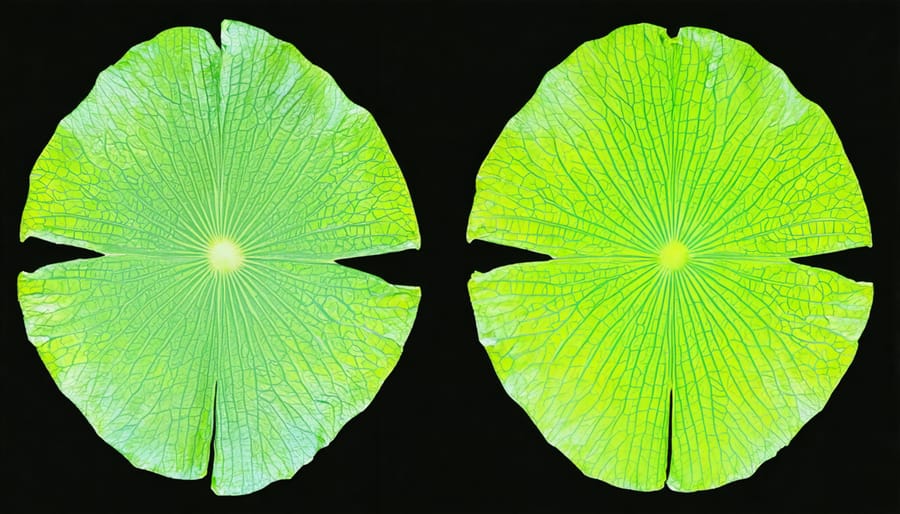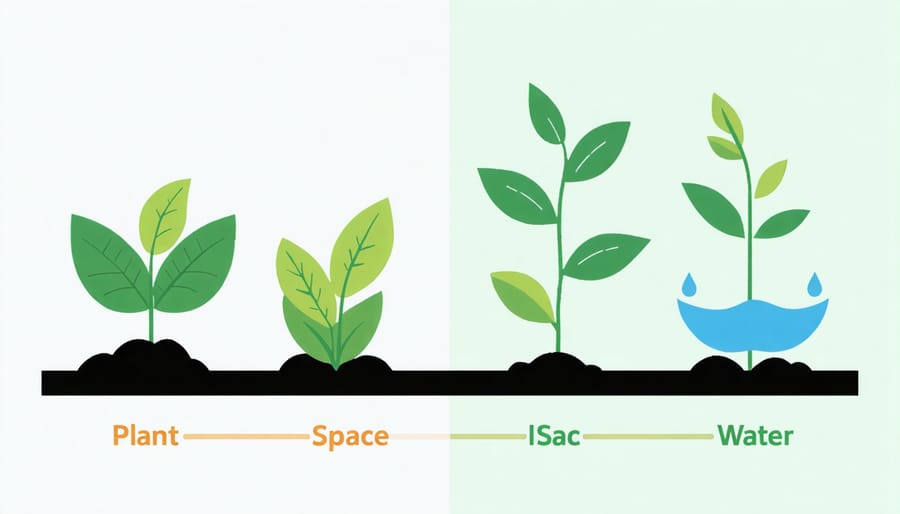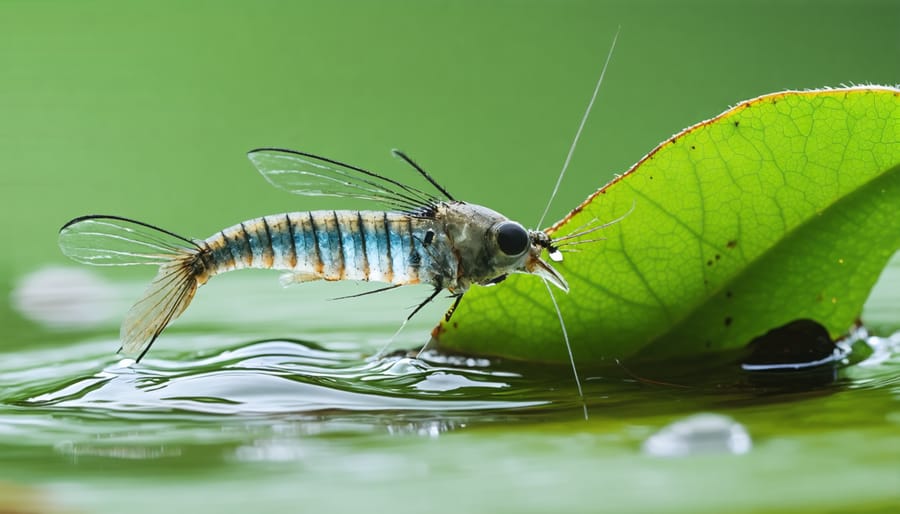
Natural Pest Control That Keeps Your Water Garden Thriving
Integrated Pest Management (IPM) revolutionizes garden protection by combining natural controls with strategic intervention, saving both your plants and the environment. This systematic approach eliminates harmful pests while preserving beneficial insects and maintaining ecological balance. Unlike conventional pest control that relies heavily on chemicals, IPM empowers gardeners to make informed decisions through careful monitoring, prevention, and targeted treatments. Whether you’re managing a small backyard garden or extensive agricultural land, these five essential IPM steps create a sustainable defense system against unwanted insects and diseases. By following this proven framework, you’ll not only protect your plants but also contribute to a healthier ecosystem and reduce your dependence on harsh pesticides. Let’s explore how to implement these practical, environmentally conscious strategies that form the backbone of modern pest management.
Step 1: Regular Monitoring – Your First Line of Defense
When and What to Monitor
Regular monitoring is key to successful pest management, and timing is everything. Check your garden weekly during the growing season, paying special attention to plant leaves, stems, and the soil surface. Early morning inspections are ideal, as many pests are most active at dawn. Focus on areas where problems have occurred before and spots with dense vegetation.
Keep an eye on potential entry points like doors, windows, and foundation cracks. In indoor settings, examine dark corners, under appliances, and around food storage areas. Document any pest sightings, including the type of pest, location, and extent of damage. This creates a valuable record that helps identify patterns and seasonal trends.
Consider using pest monitoring tools like sticky traps or pheromone lures to track pest populations. These tools can provide early warning signs before an infestation becomes severe. Remember to check protected areas where pests might hide, such as mulch, leaf litter, or dense ground cover.
Common Water Garden Pests
Before implementing an effective IPM strategy, it’s crucial to identify the common water garden pests you’re dealing with. Algae is often the most visible nuisance, appearing as green water or stringy masses on surfaces. Mosquito larvae can quickly multiply in still water, while pond snails might overtake your water garden if left unchecked. Water boatmen and backswimmers can harm small fish and tadpoles, while aphids commonly attack floating plants and water lilies.
Keep an eye out for diving beetles that prey on fish fry, and dragonfly nymphs that might feast on smaller aquatic creatures. While some of these organisms are natural parts of a pond ecosystem, their populations need careful monitoring. Signs of pest problems include damaged plant leaves, stressed fish behavior, or sudden changes in water clarity. Learning to spot these indicators early will help you maintain a healthier water garden.

Step 2: Setting Action Thresholds
Setting action thresholds is like establishing your garden’s “red line” – the point at which pest problems require intervention. Think of it as deciding how many mosquito larvae you’ll tolerate before taking action, or how much algae growth is acceptable before it needs addressing.
For water gardens, these thresholds vary depending on several factors. If you keep koi or other ornamental fish, your tolerance for predatory insects might be very low. However, you might accept a few water lily beetles if they’re not causing significant damage to your plants.
To set practical thresholds, consider:
– The type of pest you’re dealing with
– The potential damage they can cause
– The season and growth stage of your plants
– The presence of beneficial wildlife in your pond
– Your personal aesthetic preferences
Start by monitoring your pond regularly and keeping notes. When you notice pest activity, ask yourself: Is this causing actual harm? Are natural predators keeping the population in check? Will the problem resolve itself as seasons change?
For beginners, here’s a simple rule of thumb: If pests are affecting less than 15-20% of your plants or water surface, natural controls might be sufficient. Above this level, you’ll want to consider more active management strategies.
Remember, setting thresholds isn’t about achieving perfect pest elimination – it’s about maintaining a healthy balance in your water garden ecosystem.
Step 3: Prevention Strategies
Plant Selection and Maintenance
Start your IPM strategy by selecting plants that naturally resist common pests. Look for varieties specifically bred for disease resistance and those that thrive in your local climate. Native plants often prove more resilient against local pest pressures and require less maintenance overall.
Proper plant maintenance plays a crucial role in preventing pest problems. Ensure adequate spacing between plants to promote good air circulation and reduce humidity that attracts pests. Regular pruning helps remove dead or diseased portions before they become pest havens. Keep your garden clean by removing fallen leaves and debris that could harbor unwanted visitors.
Water and fertilize appropriately – both overwatering and undernourishment can stress plants, making them more susceptible to pest attacks. Monitor plant health regularly, checking for signs of nutrient deficiencies or environmental stress. Remember, healthy plants naturally resist pest infestations better than weakened ones.
Consider companion planting strategies, where certain plant combinations help deter pests naturally. Some aromatic herbs and flowers can help repel common garden pests while attracting beneficial insects.

Environmental Controls
Effective managing water conditions is crucial for preventing pest problems in your water garden. Start by maintaining proper water quality through regular testing of pH, ammonia, and nitrate levels. Keep your pond’s water moving with adequate filtration and aeration systems to discourage mosquitoes and algae growth. Ensure proper water depth – deeper areas provide fish with refuge from predators and help maintain stable temperatures.
Trim back overhanging vegetation that might drop excess organic matter into the water, as this can lead to water quality issues. Consider installing UV clarifiers to control algae naturally, and maintain appropriate fish populations to prevent overcrowding. During hot months, provide shade through floating plants or shade sails to prevent excessive water temperature fluctuations.
Regular water changes of about 10-15% monthly help maintain optimal conditions and remove potential pollutants that could attract pests. Remember, a balanced ecosystem is your best defense against unwanted visitors!

Step 4: Biological Control Methods
Biological control is one of the most fascinating and eco-friendly approaches to pest management in water gardens. By introducing beneficial organisms that naturally prey on or compete with pest species, you can create a balanced ecosystem that largely manages itself.
Fish play a crucial role in biological control. Adding mosquito fish or minnows helps control mosquito larvae, while koi and goldfish eagerly feed on algae and insect larvae. These natural predators not only keep pest populations in check but also add life and movement to your water garden.
Beneficial insects are another powerful ally. Dragonflies and damselflies are excellent at controlling mosquitoes and other small flying insects. You can attract these helpful predators by maintaining healthy water quality and incorporating plants that provide perching spots.
For slug and snail control, consider introducing beneficial nematodes to your surrounding garden areas. These microscopic organisms naturally control these common pests without harming your aquatic plants or fish.
Aquatic plants themselves can contribute to biological control. Water lilies provide shade that helps prevent excessive algae growth, while floating plants like duckweed compete with algae for nutrients. Some submerged plants even release substances that inhibit algae growth.
Remember to maintain balance when introducing biological controls. Start with small numbers and observe the results. Over time, you’ll develop a thriving ecosystem where beneficial organisms work together to keep pest problems at bay naturally. This approach requires patience but offers long-term, sustainable results without the need for chemical interventions.
Step 5: Chemical Control as Last Resort
While integrated pest management emphasizes natural solutions, there may be times when chemical treatments become necessary as a last resort. When other IPM methods haven’t provided sufficient control, using safe and appropriate treatments specifically designed for water gardens can help restore balance to your pond ecosystem.
Before applying any chemical treatment, carefully identify the specific pest problem and choose a product formulated for water garden use. Always read labels thoroughly and follow dosage instructions precisely – remember, you’re working with a delicate ecosystem that includes fish and beneficial organisms.
Time your treatments wisely, applying them early in the morning when oxygen levels are highest. Consider treating only affected areas rather than the entire pond when possible. Monitor water temperature, as some treatments become more toxic in warmer conditions.
Keep detailed records of which treatments you use and their effectiveness. This information helps you make better decisions for future pest management and avoid overuse of chemicals. After treatment, continue monitoring your pond closely and maintain good water quality through regular maintenance.
Remember that chemical controls should support, not replace, your other IPM practices. By using treatments sparingly and appropriately, you’ll maintain a healthier balance in your water garden while protecting your aquatic plants and fish.
Integrated Pest Management offers a sustainable, environmentally friendly approach to keeping your water garden healthy and beautiful. By following these five steps – monitoring, identification, setting thresholds, prevention, and control – you can effectively manage pests while protecting beneficial organisms in your aquatic ecosystem. Remember that IPM isn’t about eliminating all pests, but rather maintaining a healthy balance. Start with prevention methods, choose natural solutions when possible, and only escalate to stronger control measures when necessary. With patience and consistent application of these IPM principles, you’ll create a thriving, balanced water garden that naturally resists pest problems while remaining safe for fish, plants, and wildlife. Make IPM your go-to strategy for long-term garden health and environmental stewardship.
